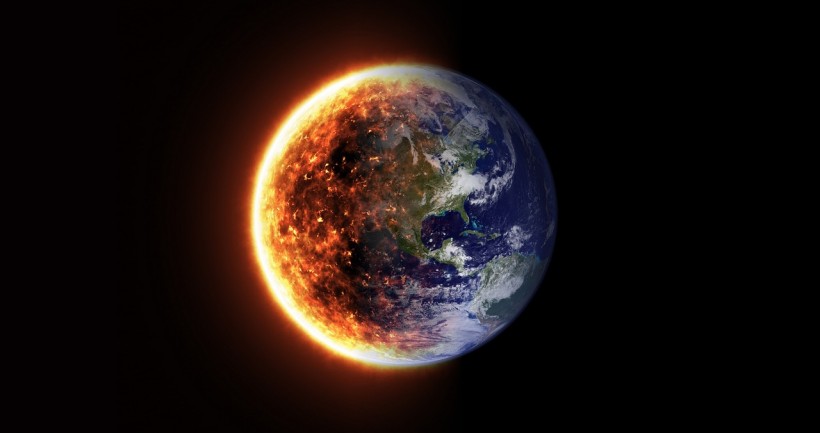From the 2012 Mayan calendar to ongoing discussions about climate change, people's curiosity about Earth's survival endures despite scientific insights. While researchers have offered glimpses into potential scenarios, doomsday predictions persist.
Currently, the Sun serves as a vital source of gravity and energy, but as the central star of the Solar System ages, its life cycle will eventually lead to Earth's demise.

Earth's Future: Will Humans Cease Before the Planet?
Sun's Evolution and Potential Human-Induced Extinction Decides Earth's Fate
The envisioned demise of Earth, marked by the Sun's eventual engulfment of the planet, is estimated to unfold several billion years from now. However, a more imminent termination awaits life on Earth, with conditions turning unsuitable for most organisms around 1.3 billion years into the future due to the natural evolution of the sun.
Additionally, there looms the potential for human-induced extinction of themselves and other living organisms within the next few centuries, be it through unaddressed climate change or the repercussions of nuclear conflict.
The fate of the planet is intricately intertwined with the Sun's evolutionary trajectory. As described by Ravi Kopparapu, a planetary scientist at NASA's Goddard Space Flight Center, Earth has approximately 4.5 billion years before the Sun transitions into a sizable red giant, eventually engulfing Earth.
The red giant phase signifies the concluding stages of stellar evolution, initiated by the depletion of hydrogen fueling the Sun's nuclear fusion. As fusion subsides, gravity assumes control, compelling the helium core to compress and temperatures to rise. This surge in heat triggers a substantial expansion of the sun's outer plasma layer, swelling it to at least the size of Earth's orbit.
READ ALSO: When Will the Sun Die? Will Living Things Survive Without the Solar Heat?
How Would Earth Cease To Exist?
The Earth's demise is anticipated due to the sun's escalating radiation, projected to occur in approximately one billion years, around the year 1,000,002,021. This event is foreseen to vaporize the planet's atmosphere, absorbing oxygen and extinguishing all life, resulting in a desolate, barren rock.
More so, the extreme heat will precede its outward expansion, causing oceans to evaporate, the atmosphere to dissipate, and the Sun's gravitational forces to tear Earth apart.
Roughly 1.3 billion years ahead, sustained hot and humid conditions will make Earth unsuitable for human survival. In about 2 billion years, escalating sun luminosity may lead to the evaporation of oceans.
While some extremophiles near hydrothermal vents may endure, complex life, including humans, faces existential threats. Humans, being sensitive to even minor temperature shifts, are vulnerable to life-threatening conditions, such as dangerously high wet-bulb temperatures.
Predictions suggest that lethal wet-bulb temperatures could occur at 86 F (30 C), challenging the resilience of life. Climate models indicate that regions like the Middle East could experience regular occurrences of 95 F (35 C) by the century's end, posing severe risks to both wildlife and human societies.
The immediate impact of human-induced climate change, driven by greenhouse gas emissions, poses a substantial threat to life on Earth, marking a critical concern within the next hundred years.
RELATED ARTICLE: Will The Sun Explode 5 Billion Years From Now? Probably, Experts Say!
Check out more news and information on Earth in Science Times.


![Humans Will Go Extinct on Earth in 250 Million Years; Mass Extinction Will Occur Sooner if Burning Fossil Fuels Continues [Study]](https://1721181113.rsc.cdn77.org/data/thumbs/full/53373/89/56/50/40/humans-will-go-extinct-on-earth-in-250-million-years-mass-extinction-will-occur-sooner-if-burning-fossil-fuels-continues-study.jpeg)











